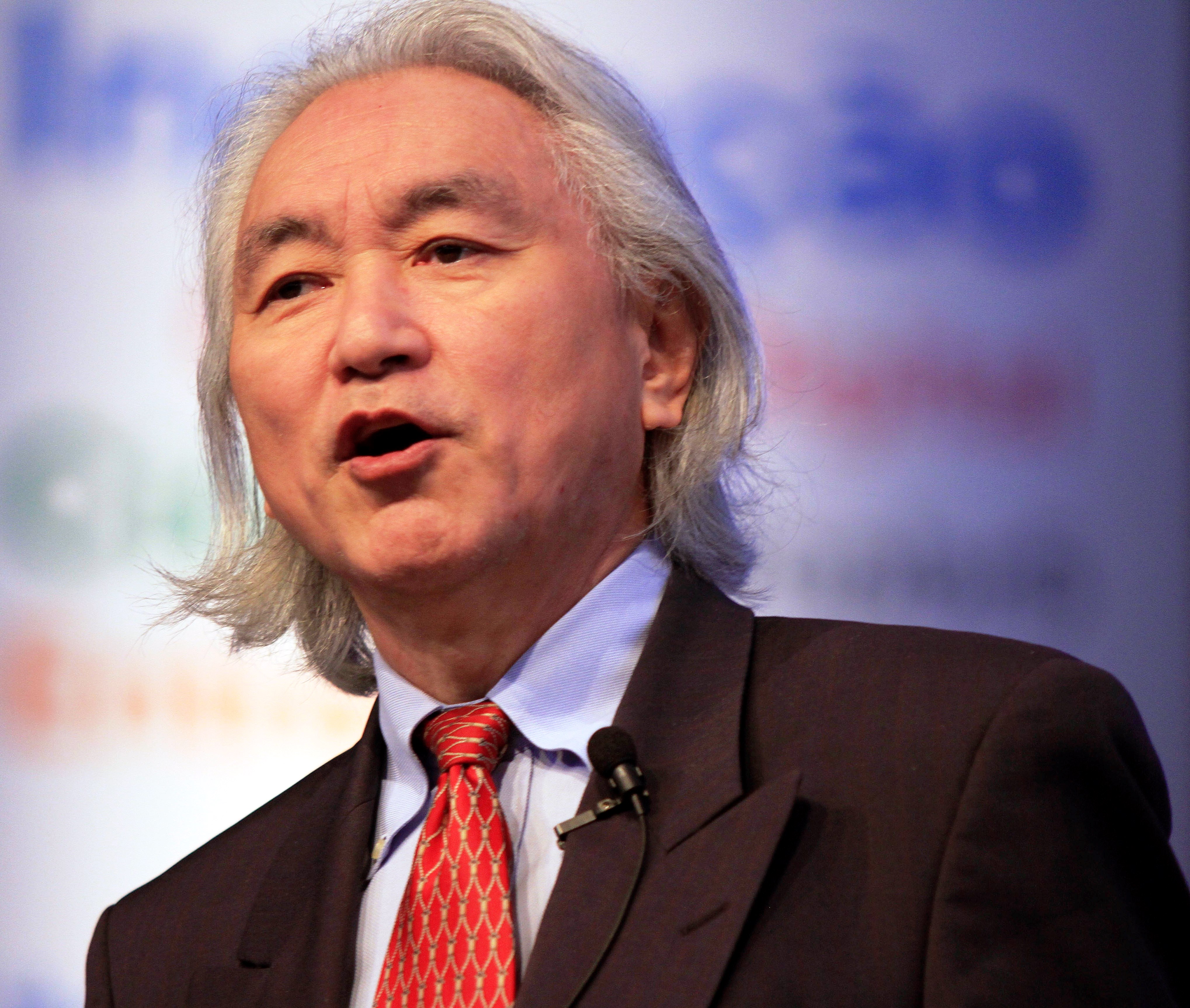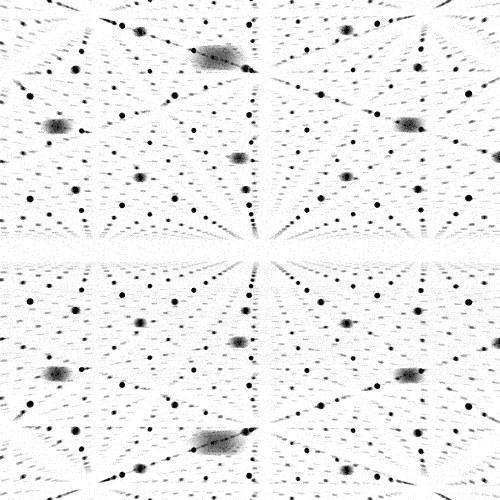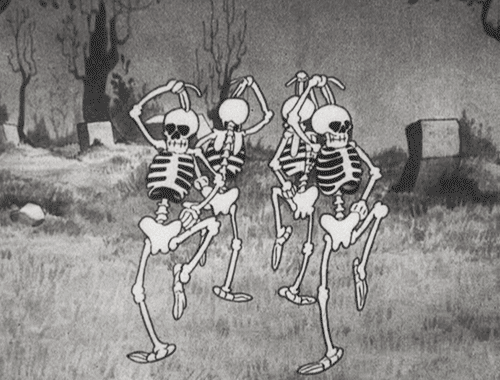Today’s theoretical physics sounds like ancient magic, but it’s looking forward, daring to imagine endless possibilities. What are they and when will the theories on the edge of progress change our lives? We’ve talked about this with brilliant physicist, father of the string theory – Michio Kaku.
SS: Can you explain to me about this Nobel Prize, and physicists who got it because there’re discoveries of gravity waves, what does it mean? Can we actually control gravity? Are we getting closer to controlling gravity? I mean, I have my personal interests.
MK: No, we cannot control gravity, but we can measure it and harness it and probe some of the deepest secrets of nature itself.
SS: What would that give us as humans on earth?
MK: First of all, we’ll begin to understand where it all came from, how the universe was created. People ask the question, “Well, if there was an explosion at the beginning of time, where did the explosion come from? What was the universe like before Genesis?” Well, we physicists believe that the universe is a bubble of some sort. It’s expanding. That’s the Big Bang theory. However, we think there are other bubbles up there, other bubble universes, a multiverse of universes. So instead of just one soap bubble universe is expanding, we live in a soap bubble, a bubble bath, a bubble bath of universes. And when these bubbles collide, we think that could be the big bang. So this cosmic expansion that took place at the beginning of time may have taken place because of the collision of universes or perhaps the fissioning of a universe into two smaller universes. And so we’re going to put into outer space a gravity wave telescope, perhaps in a few decades, that will allow us to peer into the instant of creation. We’re going to get baby pictures of the infant universe as it emerges from the womb. And maybe we will find evidence of an umbilical cord. An umbilical cord connecting our infant universe to a mother universe. And perhaps that is the Big Bang.
SS: But could we ever get closer to understanding and somehow controlling time if we have a better understanding of how gravity works?
MK: Well, eventually, maybe millennia from now, we may have enough power to begin to think about building a time machine or building perhaps a space warp, just like you see in the movies…
SS: I was going to ask you that. Is it is it really a pipe dream for people or is it a question of future?
MK: It is a pipe dream for us because we’re so primitive. However, maybe in outer space, aliens have already done this, but it would take the power of a black hole in order to rip the fabric of spacetime. Einstein’s equations do allow for time machines, for example. Einstein said that time is a river. It’s a river that speeds up and slows down. But it’s a river that can fork into two roads or perhaps a river that can have whirlpools, whirlpools which would make time travel possible. Now, this is not for us, but I think in the far future, if we have enough energy, perhaps we’ll be able to bend time into a pretzel and perhaps maybe even drill a hole through space and time. And that’s called a wormhole.
SS: Well, there have been many theories so far that are helping us better understand how the universe works. But you’ve contributed to one of the main ones. That is the string field theory. So the string field theory, if I understand correctly, in essence, is a theory that imagines the world made up of different strings of energy. So if I gather it correctly, does this mean that in some sense, in essence, we’re nothing but string music?
MK: That’s right. We think that the variety of subatomic particles we have – hundreds of subatomic particles we get by smashing protons apart in Geneva, Switzerland, are nothing but musical notes on a tiny, tiny vibrating string. So this would be an electron. This would be a neutrino. That would be a quark. They’re nothing but different vibrations of a tiny violin string. So what is physics? Physics is nothing but the harmonies you can create on vibrating strings. What is chemistry? Chemistry is the melodies. The melodies you can play on strings. What is the universe? The universe is a symphony of strings. And then what is the mind of God that Albert Einstein wrote about for the last 30 years of his life? The mind of God would be cosmic music. Cosmic music resonating throughout the universe. That would be, quote, “the mind of God” that Albert Einstein wrote about.
SS: Is this why a lot of people actually say (I think Herman Hesse has it also in his book) that music is so much more than any other part of any other art, just because it’s unexplainable how it works on souls of people, and you can just gather people and make them cry under a music and it doesn’t need translation because it is what we are?
MK: Think of all the paradigms of nature, which is the richest one? For example, some people think that maybe orbits are the paradigm of Mother Nature, but you cannot create too many solar systems with objects going around other objects. But think about music. Music has the richest set of complexities, and harmonies, and rhythms of all the paradigms of Mother Nature. Music is the one that is the most complex, the most sophisticated, and it’s the medium that Mother Nature uses to create the diversity of protons, neutrons, quarks, neutrinos that make up our universe. And so we think that in some sense, the melodies of nature is physics.
SS: I want to talk to you about another very popular theory, which is the multiverse theory, and that’s been very popular also in science fiction movies lately. What do you make of it? Does this mean that there are parallel realities to our reality?
MK: Well, according to quantum mechanics, objects could exist in multiple realities. I’m speaking here in Moscow about quantum computers – computers that actually compute in parallel universes. You see, an electron, we think, is nothing but a dot that sits at a certain point. But the quantum theory says, “No! The electron could be in many places at the same time”. Now, that boggles the mind. But how is it possible that an electron can be in two places at the same time? Because the electron exists in a multiverse, a multiverse of parallel universes, and therefore that allows us, we think, to create a new kind of computer. That’s why I’m here in Moscow to talk about this – a quantum computer that computes in parallel universes.
SS: So is this the big breakthrough in physics that we start talking about from the beginning of this interview?
MK: That’s right. We no longer believe in a UNIverse. That is a one universe theory. We think that our universe can coexist with other universes. And we think that explains a lot of the mysteries of Mother Nature. For example, it looks as if our universe was tuned just right to allow for humans to exist. If the nuclear force were stronger, the Sun would have burnt out billions of years ago. If the nuclear force were weaker, the Sun would never have formed. And so the universe seems to be tuned just right to make humans. Now, does that mean that there’s a God that created humans? Not necessarily. It means that there are other universes where the Sun never ignited, other universes where the Sun burnt out too quickly. We’re lucky. We’re lucky to live in a universe that is just right to allow for life.
SS: So what you’re saying would actually exclude an option of having multiple mes or multiple yous in different universes and parallel universe because the Sun never ignited there, or the Sun burnt out too quickly there? Am I right?
MK: No. In some parallel universes there’s no life because the Sun never ignited or the Sun burnt out too quickly. However, there are other universes that look just like ours, where we have twins of ourselves. When I look in the mirror, I realize that I’m not really seeing myself as I really am. When I look in a mirror, I see myself a billionth of a second ago because that’s how long it takes for light to go from here to there and back. And I also realize that when I look in a mirror I’m seeing waves. Millions and millions of waves that look like me, but actually are not. And some of these waves go in different directions. So one day I’ll decide to go to school, another day I’ll decide to go to the beach. It’s the same me splitting apart into multiple universes.
SS: So does this mean that there is a parallel universe where another me didn’t commit the mistakes of my life in this universe?
MK: That’s right. Or another universe where you made a lot more mistakes. And in this universe, you’re fortunate enough to be here.
SS: How do they interconnect? I mean, do my decisions in this life, in this universe affect what happens to me in a parallel universe?
MK: For the most part, the answer is no. For the most part, we cannot enter another parallel universe. In other words, universes are vibrating, and they vibrate in unison. But these universes begin to separate with time, and therefore it’s very difficult to enter a parallel universe because we’re no longer vibrating at the same frequency as these other universes. And so in this room, there are the waves of dinosaurs, in this room there are the waves of aliens, the waves of all sorts of crazy things. The waves of a universe where people never existed. Except we’re not vibrating at the same rate anymore. We’ve decohered from them, so we cannot talk to dinosaurs. In other words, they are probably dinosaurs in this room right now. It sounds crazy, right? But we’re not vibrating at the same frequency as them. So we can’t talk to them. We can’t interact with them anymore.
SS: There may not be this tangible way of connecting to me or to dinosaurs, but there must be something that connects us all. What is it?
MK: That’s right. There is a way. And at the subatomic level it’s called ‘entanglement’, where quantum computers compute in different universes. So the computer exists not in one universe, but in many universes simultaneously. And that’s why it’s so powerful, it’s more powerful than a conventional computer which computes with zeros and ones, zeros and ones, because a quantum computer computes in multiple universes. Now, this may blow your mind. This sounds like science fiction, but hey, we call it physics.
SS: Would that computer, quantum computer eventually, in, I don’t know, a hundred thousand years, allow me or you to break through this bubble – this universe – and actually meet me in the next bubble – a parallel universe?
MK: It’s conceivable. Very difficult. In fact, that’s why quantum computers are so difficult to create, because we want to make all the electrons vibrate in unison. And when they decohere, that they split apart into two universes, then they no longer can compute anymore. And so, believe it or not, the future of civilization, all the computational power of a future civilization may depend upon computing in multiple universes. And so this is not science fiction anymore – the world economy could one day depend upon this.
SS: You brought up quantum physics, talk to me about it, because it was too complicated for me to grasp all that it’s about. There’s one thing that I think I understand about it, and that is that a wave becomes a particle when observed, and when it is observed it’s a wave of possibilities. So my friends, my mystic friends, what they gather out of it is that observations and the power of mind can actually shape the world around you. Basically, you think of something, and you visualise it, and that comes true. What do you make out of it? Is this how it works?
MK: Well, the greatest paradox in all of science that really encapsulates what we’re talking about is called the cat problem. The Schrodinger cat problem. If I put a cat in a box and connect the cat to a gun, and the gun is connected to uranium. Uranium is a quantum mechanical thing. It radiates radiation, quantum mechanically. It sets off the gun, which then kills the cat. So the question is, if you put everything in a box and you can’t look at it, “Is the cat dead or alive?” Well, we physicists say that you have to write the wave of a dead cat and added to the wave of a live cat. The cat is neither dead nor alive, the cat exists simultaneously in two states, it’s a nether cat[SA3] . OK? Now you may say, “This is crazy. I mean, you physicists are lunatics”. But this cat could be an electron, and the electron can exist in two states at the same time. So if electrons can do it, why not cats? Now, the way that we physicists get around this is that the universe has split in half. In one half, there is a dead cat; in the other universe, there is a live cat. And that’s how we explain the Schrodinger problem. The multiverse idea allows you to explain how cats can be both dead and alive simultaneously. Now, this means, by the way, that people who are dead in our universe could be alive in another universe. We can’t talk to them because we are no longer vibrating at the same frequency. But it means that Elvis Presley could be alive in a parallel universe.
SS: Would that bring up the whole dogma of soul and what happens to it after the body is dead here on earth? Does that somehow connect to what you are saying?
MK: It somehow does, however a thousand years ago, philosophers believed in dualism. The soul and the body were separate. And when you die, this all went to Heaven and the body went to the earth. That’s how it was for thousands of years. And then we have now neuroscience. Neuroscience says, “No, no, no, no. It’s just the brain. The brain thinks there’s a soul, but it’s just neurons”. Now we’re beginning to come back to the way it was a thousand years ago, because now we are thinking about digital consciousness, because it’s possible to digitise everything known about you: your credit card transactions, your videotape, YouTube interviews, everything known about you can be digitalised. And when you die, your digital fingerprint lives forever. And we’re going to get very good at this. In the future, we’ll be able to digitise everything that is known about us.
SS: I found something that you said fascinating and very interesting. You have said that your life’s work is to take the laws of physics and summarise it into an equation that is one inch long, and that equation would be ‘the God of Einstein’. You said that, right? So does that mean that basically you are looking for God and is God an equation?
MK: Well, we think that string theory, which summarises all known physical laws, can be summarised into an equation one inch long. That’s my equation, that string field theory. Now, why don’t we physicists win the Nobel Prize then? Because there’s a problem. It turns out that we now believe that membranes can also exist with strings. So not just strings, but like little balls, beach balls. In fact, our universe could be a membrane of some sort. And that theory has not been put into its final form yet. But string theory, yes, string theory can be summarised into a one inch equation, which happens to be my equation. That’s my contribution to string theory – to be able to summarise it into an equation one inch long.
SS: But what struck me, what you said was the word ‘God’. ‘That would be the God of Einstein’.
MK: No, Einstein said that he wants to read God’s thoughts. These are his exact words. OK? He didn’t necessarily say this equation created God or this equation was God. He said that this equation is God’s thoughts. That’s how he phrased it. So he evaded the question, “Which came first, God or the equation?” He did not say which came first. However, he did believe that there are two kinds of gods that we have to separate. The first kind of God is the personal God, the God that answers prayers, that God that smites the Philistines, the God of the Old Testament. He did not believe in that personal God. He believed in the God of Spinoza, the God of harmony, beauty, simplicity. The universe didn’t have to be beautiful. Universe is gorgeous and simple. You can put all the laws of physics into one little equation. That is not an accident. So Einstein said that there is a God of physical law, not a personal God, that answers your prayers and smites the Philistines, but a God of the universe that gives us the physical laws. In other words, a lawgiver, is what Einstein said.
SS: Is this your understanding of God as well?
MK: That’s my understanding of God. Now, where this equation came from, we don’t know. We just know that once you have this equation and you solve it, you get electrons, and protons, and neutrinos, and Big Bangs, and Earths, and water, and people.
SS: What comes first, in your opinion, equation or God?
MK: I don’t know. I think that’s where we begin to have no words to describe which came first. Einstein would say probably that God came first, and God’s thoughts are the equation. And therefore, in some sense, these are the thoughts that God created.
SS: He also said once that with progress, the understanding of physics gets simpler and simpler. See, we have all these concepts: quantum physics, waves, particles, membranes, strings, black holes. I mean, it’s hard enough to even start to understand one of those concepts. How is it getting simpler?
MK: Well, you know, I have friends of mine who are getting PhDs in English literary criticism and they write PhD theses on Shakespeare and “what did he really mean when he said this?” And I said to myself, “English is getting more and more complicated. Every year, somebody writes another PhD thesis on James Joyce, or Hemingway, or Shakespeare!” So English is getting more complicated with time. Physics is getting simpler, and simpler, and simpler. The laws of electricity and magnetism, which makes this interview possible, is called Maxwell’s equations. Maxwell’s equation is half an inch long. It’s the divergence of the F tensor is zero. Then light comes right out of it. It turns out that Einstein’s equation for gravity is a little bit longer: gμν = 0. That’s Einsteins famous equation. That makes possible black holes and Big Bangs. The quantum theory is messier. It’s about a page long, but it can be summarised into string theory, which is, again, governed by my equation. And then you realise that physics is getting simpler and simpler.
SS: You have pointed out paradox yourself that the equations get simpler, yet we humans here on earth in this reality tend to complicate things just the same as we complicated them a hundred, two hundred, ten thousand years ago. Why isn’t life for us getting simpler and easier in understanding of how we should live if the laws of physics and how everything else works around us, like you said, is getting simpler?
MK: Because the fundamental laws, we think, are very simple and pure at the beginning of time. But after the Big Bang took place, things became complex. The human brain, for example, is the most complex object in the known universe. In the whole universe, the galaxies of galaxies, we have not seen anything resembling the complexity of the human brain. And there is a hundred billion neurons there. Each neuron connected to 10,000 other neurons. There are trillions of thoughts that we, our brain is capable of, and because of this, it means that human interactions are extremely difficult. So the fundamental laws of atoms are simple, but how they create the human brain and how humans interact with other humans is extremely complicated.
SS: I want to talk to you about another thing. There is a UK, Canadian and Italian study that has provided what researchers believe is the first observational evidence that our universe is basically just a vast and complex hologram. What that means in my terms is that everything we experience is projected at us from a border line, somewhere from there, from the universe. Is this what it means?
MK: Well, string theory gives us as a byproduct the holographic universe. Now think of a hologram: a hologram is a two-dimensional, it’s flat like this. But when you shine a laser light, out comes a three-dimensional wavefront. So if your eyeball is sitting over here, you see three dimensions. This is how, for example, at Disneyworld and amusement parks, ghosts and all sorts of creatures come out in three dimensions. How is that possible? It’s because it’s a flat sheet of glass that has a hologram on it. You shine laser beams on the outside from the backside and out comes a three-dimensional image. We think our universe is three-dimensional because we have length, width and height. String theory says, “No. The universe is perhaps ten-, maybe eleven-dimensional. There are other dimensions out there that we cannot visualise”. Now, to see this, think of a child. I used to spend a lot of time in San Francisco looking at the fish swimming in a Japanese tea garden. The fish live in two dimensions. They can only swim left, right, forward, backward. The concept of up beyond the pond is totally alien to them. They cannot visualise the world of up. It’s only a two dimensional pond. And then I said, “If there is a scientist fish there, the scientist fish would say, ‘Bah! Humbug. There’s no third dimension. There’s only two dimensions. Everybody knows this! The pond is the universe!’”. And then I imagine as a child grabbing one of these scientist fish, lifting the scientist fish into the world of up, what would he see? He would see three-dimensional beings moving without fins, a new law of physics; beings breathing without water, a new law of biology. And then I put the fish back in the pond in my dream and then I said, “How would he explain it to the other fish? ‘I was in a parallel universe! I left the universe! I saw creatures that can move in the third dimension!’ And the other fish would say, ‘You’re crazy!’” Well, today we believe that we are the fish. We spend all our lives in three dimensions moving forward, backward, left, right, up, down, thinking that’s all there is. What you see is what there is, nothing more.
SS: So you’re hoping for someone to grab you out of the universe and like, “Hello! Look what’s going on in here!”?
MK: Well, it’s conceivable that maybe one day somebody up there in another dimension, and another multiverse, and another bubble universe will come to our universe and grab us and say, “Look, look! There’s a whole universe out there, a parallel universe in dimensions beyond the dimensions that that you’d know and love”.
SS: Thank you so much, Dr. Kaku, it was fascinating talking to you. And we thank hotel Lotte Plaza in Moscow for allowing us to arrange this interview and make this happen. Thank you.
MK: My pleasure.





















